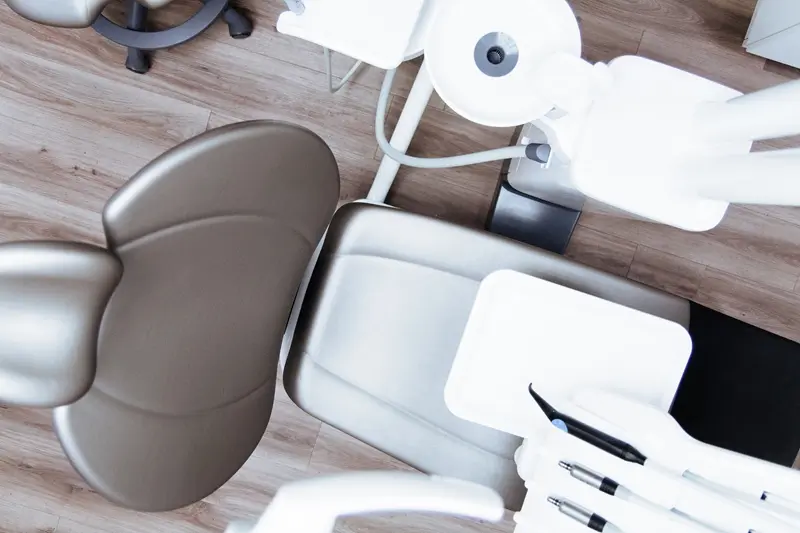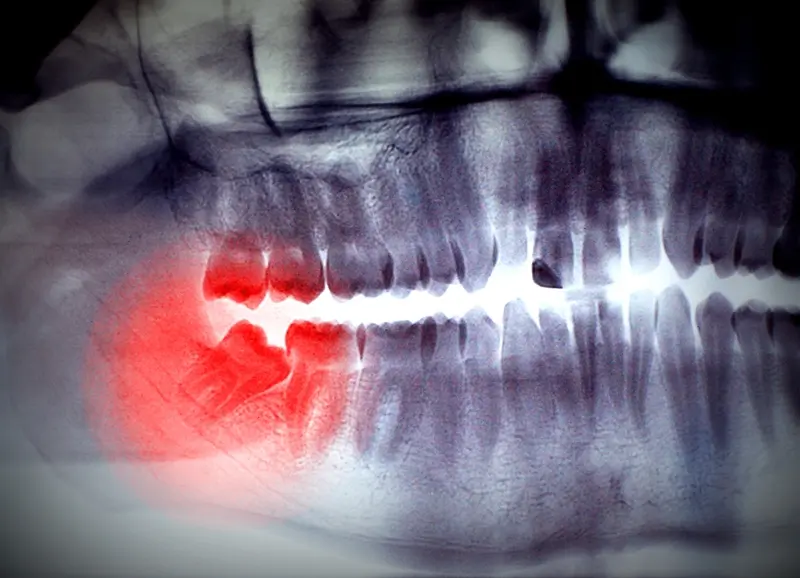Your dentist may carry out a wisdom tooth extraction with local anaesthetic. However, if you're particularly anxious about the procedure, they can use various types of sedation or even recommend a general anaesthetic.
Let's look at when sedation is appropriate for wisdom tooth removal and what the different types are.
Local anaesthetic or sedation
At the very least, you'll receive a local anaesthetic injection to numb the area around the affected tooth. For many people, this is sufficient, as they do not feel anything during the procedure. However, anxious patients may be given a sedative to help them feel more calm about the procedure and improve their experience.
Depending on the type of sedative, it may be administered via injection or oral medication. It's aim is not to deal with the pain, but to manage dental anxiety and and fear. When patients have surgery under sedation, they remain conscious. However, some people feel so relaxed under sedation they fall asleep of their accord. It's possible that patients treated under sedation won't remember much about the surgery and may need a friend to help them get home afterwards. On rare occasions, a general anaesthetic may be used. This normally only happens if the procedure takes place in a hospital.

Types of sedation
Sedatives can be administered via an injection in the arm, or an oral medication. These options are fairly straight forward and are easily completed by the dentist. However, there are a couple of other types of sedation dentistry available.
Nitrous oxide, commonly known as laughing gas, is administered as you breathe through a mask. There is no unusual taste or smell, so it feels like you're breathing normally. The combination of nitrous oxide and oxygen works to make you feel relaxed and calm ahead of your procedure. This type of sedation wears off quickly which means you'll be able to drive and look after yourself shortly after surgery. However, some dentists combine the nitrous oxide treatment with an oral sedative which means you will need help getting home.
Intravenous sedation (IV sedation) is another option, administered through a plastic tube directly into the vein. Again, you'll be conscious through this type of sedation but so relaxed you may not recall much about the procedure. Your dentist or anaesthetist spends time with your prior to the procedure putting in the IV line. They'll monitor your blood pressure, and may adjust how much sedation they use according to the stage of the procedure and how much input they need from you. Intravenous sedation on it's own does not provide pain relief so you'll still receive local anaesthesia. Patients will find they remain drowsy for some time afterwards, so should not attempt to drive or operate machinery.
In the event your dentist feels you need general anaesthetic, you'll be entirely unconscious and will have no memory of the procedure. However, this is not usual and is reserved for patients with a demonstrable need for general anaesthetic.
The dentists makes a small incision into the gum so they can access the tooth.
Wisdom teeth are the four large molars at the back of the mouth. Usually, they arrive during a person's late teens or early twenties. Wisdom teeth have a tendency to cause problems when they don't have enough space to come through properly. Often they're referred to as impacted, which means they get stuck at an angle and can't fully come through. When this happens, there is risk of infection, damage and decay. As a result, it is sometimes best to remove the wisdom teeth altogether.
When the dentist decides that an extraction is the best course of action, the tooth may or may not have come through the gum. The first step for the dentist is to make a small incision into the gum so they can access the tooth. Sometimes some of the bone covering or surrounding the tooth is removed as well. The dentist will use a drill to divide the tooth into several smaller parts that they can remove one by one.
Prior to the procedure, the dentist takes X-rays to understand the position of each tooth, and determine which ones actually need removing. Some people have all of their wisdom teeth removed, others have just one or two extracted. Typically, the upper wisdom teeth are slightly easier to extract. How long the procedure takes varies according to how complicated it is. Straightforward extractions can take as little as 20 minutes. However, more complex wisdom tooth extractions can last much longer.

Post-surgery care
Immediately after surgery, your dentist will want to encourage a blood clot to form in the now empty tooth socket. They'll probably put gauze over the site, and ask you to hold it in place by biting down on it.
Blood clots are part of the wound healing process, and it's important you know how to support it. Try to avoid:
- Using straws as the suction can dislodge the blood clot.
- Doing strenuous physical activity for a few days as this can also affect the wound.
- Drinking or eating very hot or cold substances, like soup or tea.
Full recovery may take up to two weeks. You may want to book a few days off work. Some people experience some pain after surgery, and this largely depends on the complexity of the extraction. You might find you have a swollen face, light bruising or a stiff jaw. All of these symptoms should ease over time.
If your dentist is concerned about the risk of infection, the may prescribe antibiotics. Should you experience severe pain, discomfort or bleeding, speak to your dentist immediately.
For more information about your options when it comes to sedation, or to talk about the health of your wisdom teeth, call City Dentists on 04 978 4964 or book an appointment online.
